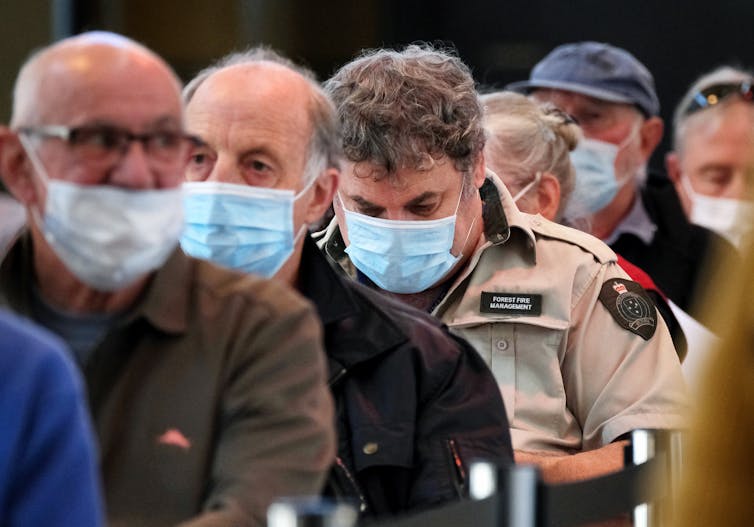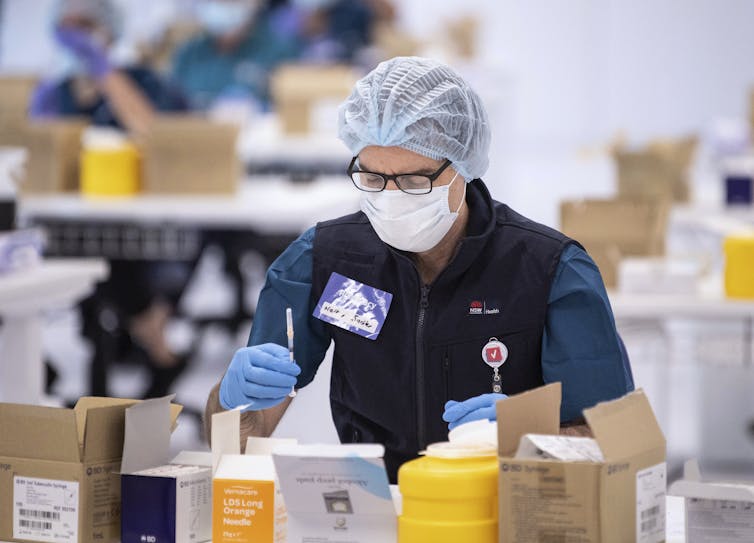No vaccine 'targets', but Australians could still be vaccinated by end of year
- Written by Driss Ait Ouakrim, Research Fellow, Population Interventions Unit, Centre for Epidemiology and Biostatistics, Melbourne School of Population and Global Health, The University of Melbourne
This week’s budget assumes Australians will be fully vaccinated against COVID-19 by the end of the year, despite Prime Minister Scott Morrison saying the government has no vaccination targets, modelling or forecasts.
Australians are eagerly watching the pace of the rollout, given this underpins a further budget assumption: international borders could re-open from mid-2022.
So are all Australians likely to be offered two COVID-19 doses by the end of the year?
Previous targets
In January, the government was aiming to vaccinate 80,000 people per week. It wanted 4 million Australians vaccinated by the end of March and the entire adult population vaccinated by October.
So far, we have only delivered 2.83 million doses.
The initial vaccination road map was derailed in part due to poor logistics, but more so due to lack of supply and sheer bad luck. Prioritising the AstraZeneca vaccine, with its local manufacturing capacity, seemed like a good bet but this was derailed by the rare — but real — possibility of blood clots.
Read more: What is thrombocytopenia, the rare blood condition possibly linked to the AstraZeneca vaccine?
The announcement overnight of 10 million doses of Moderna mRNA vaccine this year, and 15 million next year, suggests we will see AstraZeneca quietly shuffled off stage and replaced with Moderna. However, it is unlikely to impact the current timeline.
 The AstraZeneca vaccine is recommended only for over-50s.
AAP/Luis Ascui
The AstraZeneca vaccine is recommended only for over-50s.
AAP/Luis Ascui
Could we meet an end-of-year target?
In theory, yes.
Studies suggest around three-quarters of Australians are willing to have a COVID-19 vaccine. If we aim to have 75% of adults fully vaccinated with two doses this year, around 15 million Australians will need to receive 30 million doses over the next seven months.
About half of these people are 50+ or priority populations, and the other half are under 50. So that means 15 million doses before September 30 (assuming we continue using AstraZeneca), and 15 million doses from October 1, when greater stocks of the Pfizer and Moderna vaccine become available in the fourth quarter of the year.
From now until September 30, we have 100 weekdays left to deliver 12.2 million vaccine doses, or 122,000 per day.
This is twice as many doses per day as we achieved in the past week. But it’s doable if we ramp up our vaccination capacity.
From October 1 to December 24, we have about 15 million doses to administer to vaccinate 75% of all remaining adults. This will mean 250,000 vaccinations per weekday, so doubling the daily number again in the “sprint”.
Again, this is doable if we get all our mass vaccination hubs well-oiled and efficient before then. And probably use weekends, too.
 Mass vaccination hubs will need to be working efficiently in the final quarter of the year.
AAP/James Gourley
Mass vaccination hubs will need to be working efficiently in the final quarter of the year.
AAP/James Gourley
Where it gets more challenging is if many people 50 and over elect to wait for Pfizer or Moderna, meaning an even bigger “sprint”. That would require an extremely reliable supply of these two vaccines before Christmas, well-oiled delivery systems and mass vaccination sites to deliver in excess of 300,000 doses per weekday.
This implied goal of offering vaccines to all adults by the end of 2021 is ambitious, but not impossible.
So when could we open borders?
Australia will still not have COVID-19 resilience (or “herd immunity”, or something approaching it) by the end of 2021.
If 25% of Australian adults are unvaccinated, plus 100% of children, some 40% to 45% of the population will remain unvaccinated, which is likely too low to achieve herd immunity.
Wholesale opening of our borders then is not possible – the virus would still spread with substantial disease and death.
To meet a mid-2022 target for substantially loosening border restrictions, we will need children to be vaccinated and further vaccination of adults hesitant in 2021.
Authors: Driss Ait Ouakrim, Research Fellow, Population Interventions Unit, Centre for Epidemiology and Biostatistics, Melbourne School of Population and Global Health, The University of Melbourne





